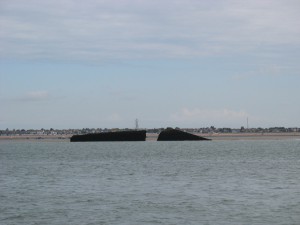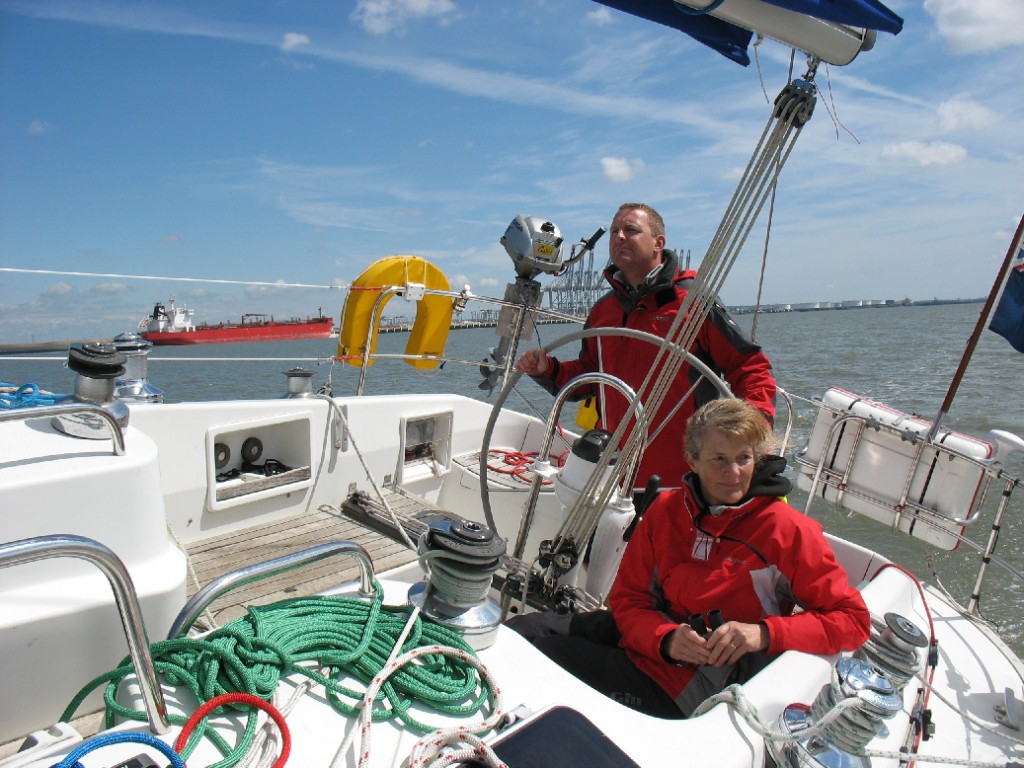Pyefleet to Limehouse – 67.8 miles in 10 hours 55 minutes
An early 4am start today. we weighed anchor from Pyefleet and after a short (and quick) motor out to the Bar buoy set sail. the sails then stayed up for the next 7 hours or so. With a fantastic breeze from the NW we made a great pace through the Spitway, down the Maplin Channel and close along the Shoeburyness shore and past Southend. We had an excellent view of the Knock John and Red Sands forts. The Knock John fort is known as a Maunsell Fort after its designer Guy Maunsell. The fort is two large concrete cylinders that were placed on a barge and then towed out and sunk into place.
Maunsell also designed the Red Sands forts that were operated by the army. These were interlinked steel platforms for anti-aircraft defence. The forts have various claims to fame, perhaps the best of which is that they were used to film a 1968 Doctor Who episode – the Fury of the Deep. Patrick Troughton was the doctor at the time. The forts stood in for a gas rig that was being besieged by an intelligent seaweed creature. Luckily there was no sign of mutant seaweed today. The Red Sands Forts also hosted a pirate radio station for a number of years.

The next bit of World War II heritage we went past was the Shoeburyness anti-submarine barrier. Most off this has been dismantled, but around a mile of it still sticks out into the estuary. Shortly after this, we then sailed past the remains of the Mulberry Harbour at Southend. The Mulberry Harbours were designed to provide shelter for ships off the beaches of Normandy. They were basically temporary harbours which were towed across and sunk in place. They were made up of a series of concrete caissons that were towed across and then flooded to sink them. Old ships were also sunk into place to provide further shelter. The individual units making up the Mulberry Harbours were called ‘Phoenix units’ and around 300 were required for the two harbours. They were built in various separate places – many of them in little-used London creeks. Just before D-Day and the harbours were put into operation, a tug was practising manoeuvring towing a Phoenix unit through the anti-submarine barrier. However, the tug ran aground and as a result the unit it was towing ran on the mud, broke its back and was abandoned there. It is there to this day – a testament to the quality of the build, if not the skill of the tug skipper!
Around Tilbury, the wind became too shifty and gusty and went ahead and so we had to motor the last stretch for a few hours. We headed right down to Tower Bridge before coming back and locking into Limehouse around 3.15pm. Scott and Jilly headed home and Anne came and joined me on board for a few days to enjoy the delights of the big smoke.

